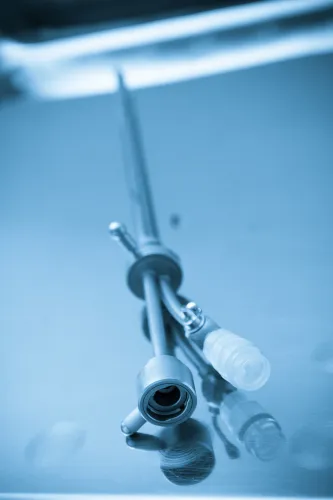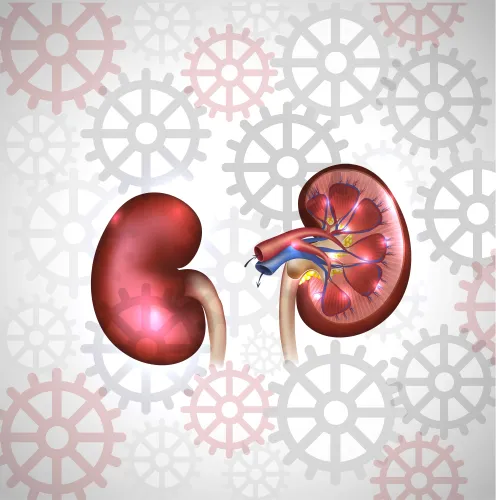Urology Coding Alert
5 Tips Guide Your Varicocele Excisions Procedure Coding
Report I86.1 for varicoceles. In some cases, your urologist may need to perform an excision of a varicocele. When your urologist performs this type of procedure, you must check and make sure you can identify the type of approach they used. Follow these handy tips to keep your varicocele excision coding in tip-top shape. Tip 1: First, Define Varicocele for Clarity A varicocele is an abnormal dilation of spermatic cord veins, called the pampiniform plexus, in the scrotum. The scrotum is the pouch of skin that holds the testicles. Varicoceles can be very painful, and the pain is only relieved when your provider ligates the veins or excises the varicocele. Tip 2: Focus on These Codes for Varicocele Excision You have several CPT® codes to choose from for varicocele excision. When it comes to understanding the difference between the following codes, you must double-check the medical documentation to confirm which type of approach your urologist used during the excision. You should also note whether other procedures took place during the same operative session: Coding tip: There is really no set number of veins to be ligated during a varicocelectomy (code 55530). However, you may consider adding modifier 22 (Increased procedural services) if the extra ligation of veins significantly prolonged the procedure or made the surgery more complicated. Your urologist will be the best one to determine this fact. Tip 3: Report Correct ICD-10-CM Codes ICD-10-CM only offers one code for varicocele — I86.1 (Scrotal varices). If you look under the included diagnoses for I86.1 in the ICD-10-CM manual, you will see this code also includes varicocele. Tip 4: Don’t Mix up Varicoceles With Hydroceles Make sure you don’t mix up varicoceles and hydroceles. Although varicoceles and hydroceles may both involve swelling, the cause and affected areas are different. A hydrocele occurs when fluid collects in the thin sheath surrounding a testicle (known as the tunica vaginalis). The correct diagnosis for a hydrocele of the spermatic cord or testis may be N43.0 (Encysted hydrocele), N43.1 (Infected hydrocele), or N43.3 (Hydrocele, unspecified). Tip 5: Pay Attention to Medical Necessity Your urologist will most often perform a varicocele excision to reverse male infertility. A slight increase in intra-scrotal temperature caused by the dilation of the spermatic cord veins often results in infertility, so the excision of the varicocele may restore male fertility. Payment alert: Michael A. Ferragamo, MD, FACS, clinical assistant professor of urology, State University of New York, Stony Brook, cautions that some payers may not reimburse for a varicocelectomy with the associated diagnosis of male infertility (N46.8, Other male infertility). However, the insurer may reimburse for the excision of a varicocele with the diagnosis of scrotal varices (I86.1). So, you should be very careful with your ICD-10-CM codes and the supporting documentation. The medical documentation must clearly support the medical necessity of the varicocelectomy. 

Related Articles
Urology Coding Alert
- Tips:
5 Tips Guide Your Varicocele Excisions Procedure Coding
Report I86.1 for varicoceles. In some cases, your urologist may need to perform an excision [...] - Quiz:
Common FAQs Perfect Your Bladder Neoplasm Claims
Report C67.7 for malignant neoplasm of the urachus. Reporting neoplasms can be tricky because you [...] - Audits:
Build a Strong Audit Program in Your Urology Practice
First, establish the audit’s scope. If you’ve ever wondered how to create an audit program [...] - You Be the Coder:
Delve Into Bladder Tumor Scenario
Question: My urologist performed a cystoscopy, transurethral resection of bladder tumors with fulguration. The patient [...] - Reader Questions:
Count Number of Lesions for Correct Code Choice
Question: For CO2 laser ablation of genital condyloma that is on the scrotum, should I [...] - Reader Questions:
Identify Type of Orchiopexy Approach
Question: Can we report 54640 for retractile testis? The patient in a normal state has [...] - Reader Questions:
Differentiate Between These Circumcision Codes
Question: My urologist excised frenular and dorsal skin bridges on an adult circumcised patient. Should [...] - Reader Questions:
Append Modifier 52 in This Situation
Question: I need some help coding the removal and replacement of a multi-component penile prosthesis. [...] - Reader Questions:
Master This Channel TURP Scenario
Question: My urologist performed a cystolitholapaxy for a stone sized greater than 2.5cm. They also [...] - Reader Questions:
Code 57120 Encompasses all Colpocleisis Procedures
Question: What codes should I report for Le Fort colpocleisis with high perineorrhaphy and cystoscopy? [...] - Reader Questions:
See How to Report Litholapaxy
Question: After informed consent was obtained, the patient was brought back to operating room and [...]




